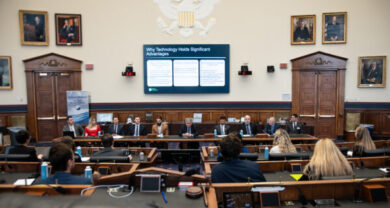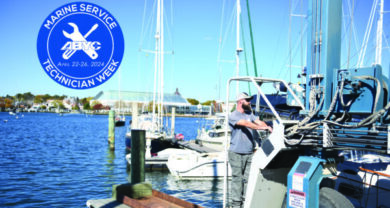Mercury Marine releases sustainability report

Mercury Marine released its 2019/2020 Sustainability Report, a document confirming the accomplishment of several sustainability goals slated for completion by Dec. 31, 2019, and announcing targets for the 2020s.
In his introduction to the report, Mercury Marine President Chris Drees called 2019 a “truly pivotal” year.
“It marked the achievement of goals across the four pillars of our sustainability mission: Energy, Environment, Product and People. While many of these targets were established in the last few years, others were set as many as ten years ago,” Drees said. “With the achievement of our 2019 goals and a variety of lessons learned along the way, we have established new and ambitious goals that will challenge us to enhance our sustainability for years to come,” he added.
When Mercury developed its goals for accomplishment by the end of 2019, the company established a baseline looking back to 2005 — before the recession of 2008-2009 — for more valid comparisons with contemporary production levels.
However, the company’s success and growth in the second half of the past decade exceeded expectations and made achieving some sustainability goals more challenging. Without creative solutions, the company’s growth and increased production could have led to more energy consumption and greater impacts on the environment.
“We had to innovate even more aggressive approaches to being sustainable through a period of explosive growth,” said Scott Louks, Mercury Marine sustainability manager.
By the end of last year, the company achieved:
45% decrease in global energy use, from 1.7 trillion BTUs in 2005 to 968 billion BTUs at the end of 2019;
35% reduction in global water usage, from 295 million gallons in 2005 to 193 million gallons at the end of 2019;
58% reduction in the generation of hazardous waste, from 297 tons in 2005 to 126 tons in 2019;
76% reduction of outboard‑engine emissions, from 66.42 grams of hydrocarbons and nitrogen oxides (HC+NOx) per kilowatt hour in 2005 to 15.80 at the end of 2019;
69% reduction of sterndrive‑ and inboard‑engine emissions, from 16.00 grams of HC+NOx per kilowatt hour in 2005 to 4.96 at the end of 2019; and steady annual increases in employee engagement in charitable causes — including financial contributions, donations of goods and volunteer time — as well as in health and wellness programs.
“We would not have reached our goals without the dedicated support of many employees working on small‑scale initiatives to combine with our large‑scale programs,” Louks said.
For example, actions contributing to the achievement of energy‑related goals included a multimillion‑dollar investment in solar panels at the company’s headquarters for the Europe, Middle East and Africa region, as well as numerous steps as simple as replacing old lighting systems with LEDs and improving power-down practices on equipment, climate controls and lighting systems.
Similarly, with regard to environment‑related goals, in 2019 the company completed a multifaceted program to make its Plant 3 warehouse and distribution center its first official zero-waste-to-landfill operation.
Additionally, however, a host of smaller projects throughout the global Mercury system focused on recycling and reuse, as well as water management, to significantly enhance the company’s stewardship of the environment.
“We view the accomplishment of our decade‑long goals as more of a checkpoint than a final destination,” said Louks. “Our dedication to sustainability and our work in support of that mission continue.”




